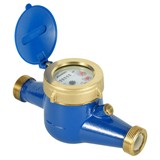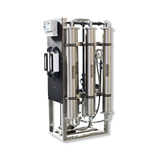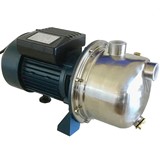Mining and farming both use huge volumes of water, and with surface supplies becoming scarce, our future economic prospects are likely to rely increasingly on our underground 'water bank', says Professor Craig Simmons, director of the NCGRT.
"Currently, $34 billion worth of Australian industry per annum is dependent on groundwater, and the direct value of groundwater to the national economy is around $7 billion a year, according to a new report which the Centre has commissioned from Deloitte Access Economics," he said.
"However with Australia now starting to outgrow its surface resources and the prospect of erratic rain fall under climate change projections, it is clear we will rely increasingly on groundwater to support large scale food, mineral and energy production into the future."
The study found Australia currently uses around 3500 gigalitres (GL, or billion litres) a year of groundwater, from an estimated sustainable reserve of 29,173 GL. Around 6500 GL is held in entitlements to extract groundwater.
Agriculture and grazing are the biggest users, accounting for 60-70 per cent of total use, followed by mining and manufacturing with around 20-30 per cent and cities with 10 per cent. Groundwater also provides major services to the Australian landscape, in the form of water for trees, vegetation and wetlands, as well as providing 'base flow' into rivers and lakes, where it is widely used for recreation and in drinking supplies.
The Deloitte Access Economics study suggested the value of Australian groundwater is likely to increase as surface supplies become scarcer during times of drought and under changing climates. It thus provides a valuable 'buffer' in times of shortages.
The study shows that: agriculture typically uses about 2GL of groundwater each year, mainly for irrigation and livestock, and groundwater underpins $4.7 billion of production; mining uses 410,000 megalitres (ML), and groundwater underpins mining production of $24.5 billion each year; manufacturing uses 588,000 ML, and groundwater underpins production of $4.4 billion to the economy a year; and our cities use 303,000 ML of groundwater a year.
"It is not generally appreciated, but mining and energy production involve a lot of water — either for dewatering mines and bores, for moving minerals as slurries, for extracting minerals using hydrometallurgy, for suppressing dust, washing equipment, restoring landscapes and so on," Prof Simmons said.
"You can't have a big mineral operation without a good source of water or a major water issue — and more often than not, that means groundwater.
"So any future mineral booms will depend critically on how well we manage our groundwater.
"Likewise, the much-talked of 'dining boom' — the expansion in worldwide agriculture driven by global food insecurity — will also depend critically on water, especially for irrigation. Given the scarcity of Australia's surface supplies, more of this water will come from underground in future."
Prof Simmons says the report makes it clear that Australia currently only uses about 8 per cent of its estimated sustainable reserves of groundwater in any year, though it has issued licences for up to 16 per cent.
"Groundwater is a priceless asset in a world that is rapidly running out of cheap, accessible water — and Australians need to take great care of it because, if we do, it will remain sustainable."
Prof Simmons cautions that Australia still lacks a detailed knowledge of the exact size of its groundwater resources and how rapidly they are renewed. Without knowing this essential information, there is always a danger we will over-exploit it, causing supplies to run out – as is happening elsewhere around the world.
"This means, more than anything else, we need the scientific and technical tools to understand, predict and manage our groundwater, which will clearly become the nation's most valuable physical resource into the future," he said.
"If we look after our groundwater, Australia can not only enjoy future mining and dining booms, but also provide for healthy landscapes and environments and thriving cities and towns.
"Because it is underground it is so easy to forget groundwater, to miscalculate its reserves. But we should never forget it constitutes more than 90 per cent of Australia's total available fresh water reserve — and is therefore the key to our national future."












